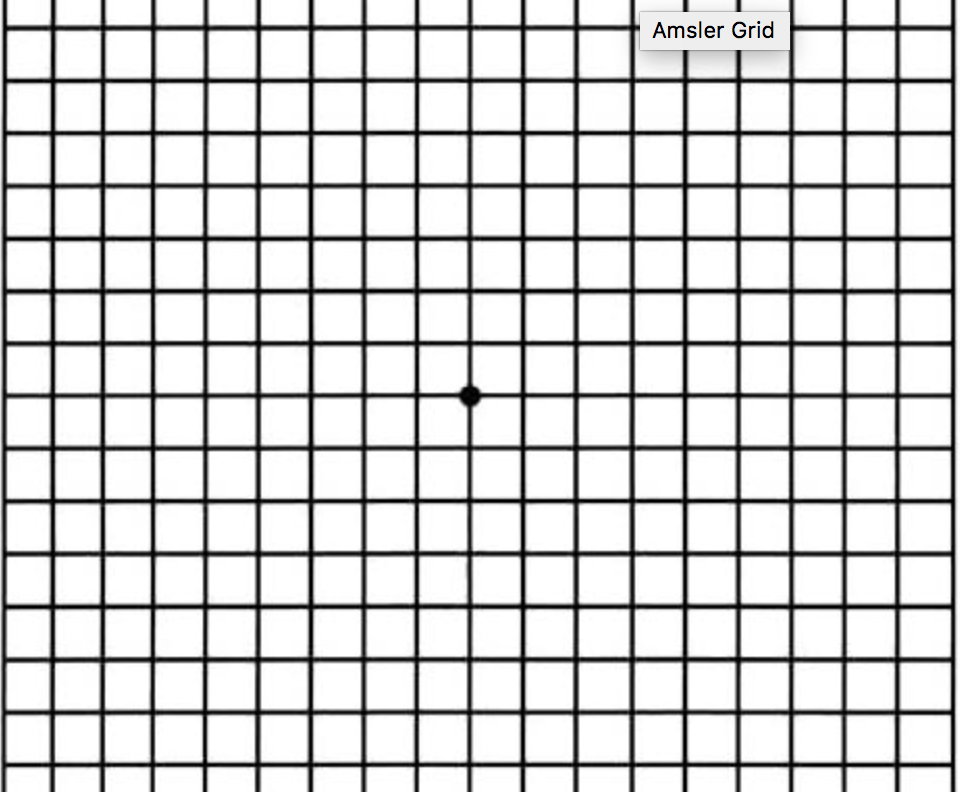An Amsler grid is a tool that can help detect early signs of retinal disease that affect the macula which is the center of vision in the retina. Age-related macular degeneration (AMD) is the most common reason for a patient to learn to use an Amsler grid. People with “wet” macular degeneration often note the sudden onset of distortion, blurring or missing areas when checking the grid. Since 10% of people diagnosed with dry AMD are at risk of converting to the wet form, it is especially important for them to monitor their vision with an Amsler grid to help detect progression to wet AMD. If caught early, there are treatment options for wet AMD that can help limit or slow vision loss.
What does it look like?
The Amsler grid is similar to a piece of graph paper with a small dot in the center. It is used to check if any of the lines appear wavy or distorted or if any areas of the grid appear to be missing, also known as blind spots. If you experience any of these things, you can mark them on the appropriate place on the grid.
How do I use the grid?
- Make sure you are in a room with adequate and consistent light.
- If you normally wear glasses for reading, put them on.
- Hold or post the grid at a convenient reading distance. Be sure to have it at the same distance each time you test your eyes.
- Test one eye at a time by covering or closing the opposite eye.
- With the eye you are testing, look at the center black dot.
- Keep your eye focused on that dot and determine if any of the lines around it appear wavy, blurred, distorted or missing.
- Mark any of those problem areas on the chart. Be sure to use separate grids for each eye and label them.
- If you notice any new or worsening distortion or blind spots, call us right away, and be sure to bring your grids with you to your next appointment.
What causes the distortion?
If you have wet AMD, abnormal blood vessels grow under the retina and may leak, causing accumulation of blood or other fluid. This build-up of fluid can interfere with your vision, causing the lines to look curved or wavy. It can also result in a “blind spot” appearing near the center of your visual field. New development of distortion or blurring in the Amsler grid appearance is suggestive of possible wet AMD with a leakage that may be treatable. However, it is important to know that dry AMD can also cause the development of Amsler grid changes that tend to worsen slowly unlike wet changes.
If you have AMD, talk to your Texas Retina Associates physician about how often you should check your eyes with an Amsler Grid. Our office can provide you with grids to use at home. Your perception of any vision changes, however slight, is important in your care to protect your vision.


